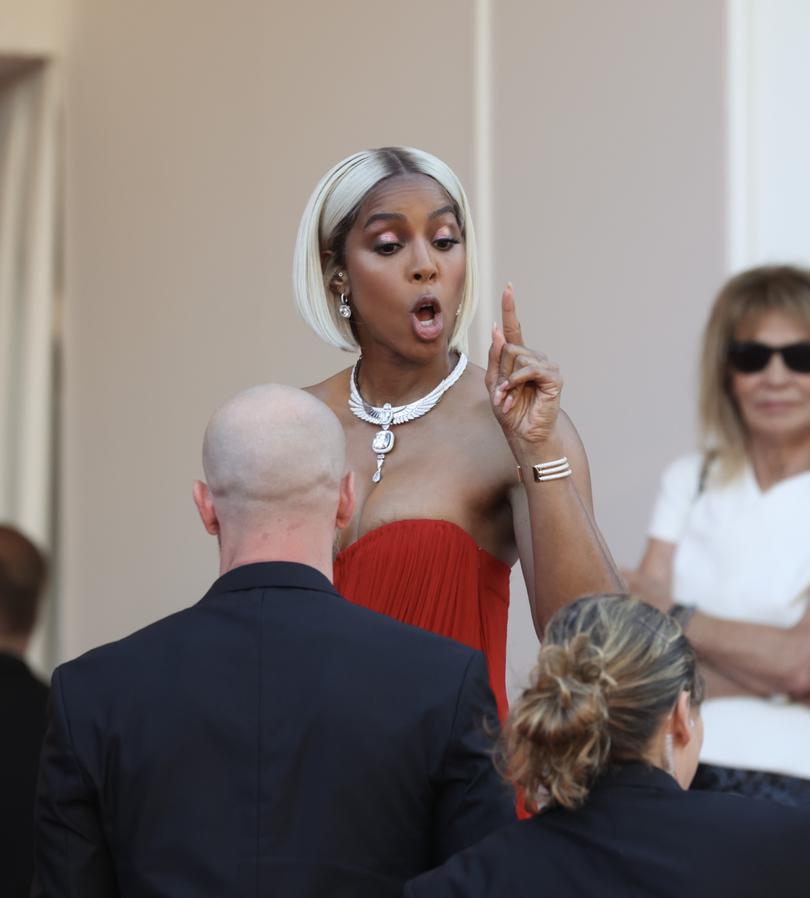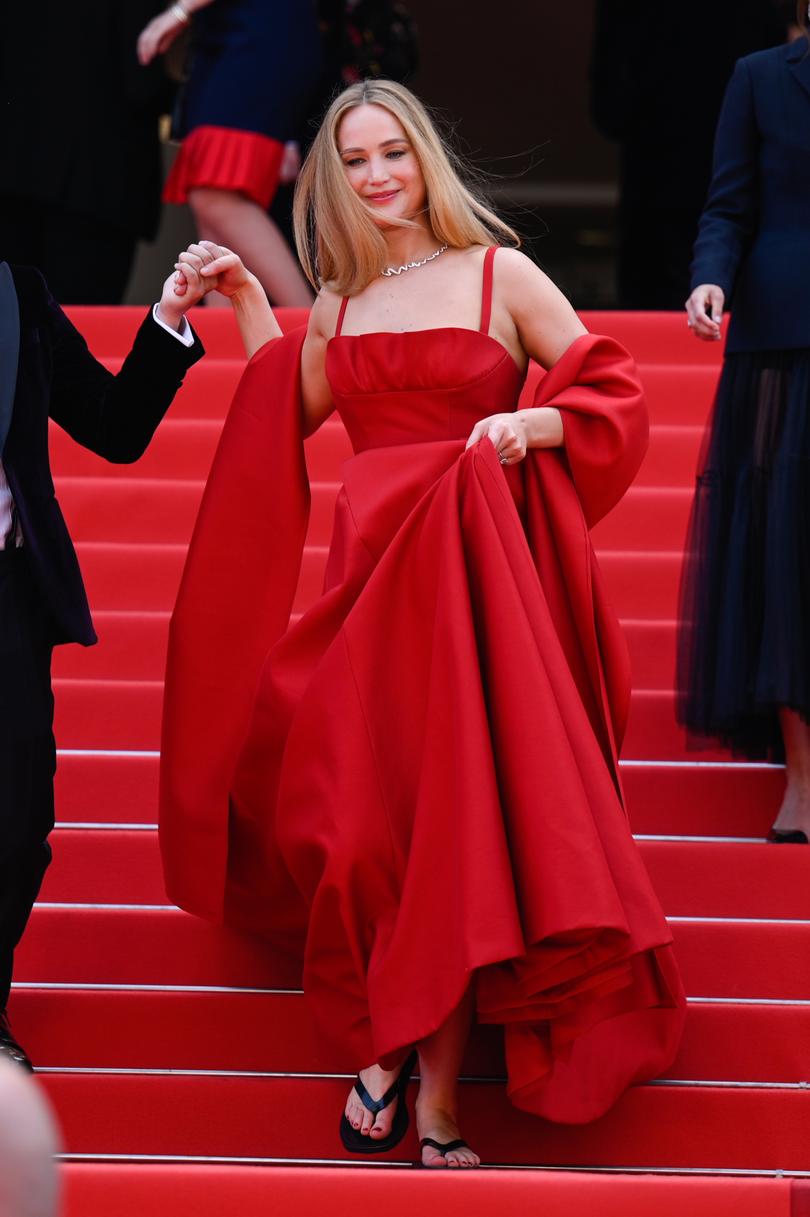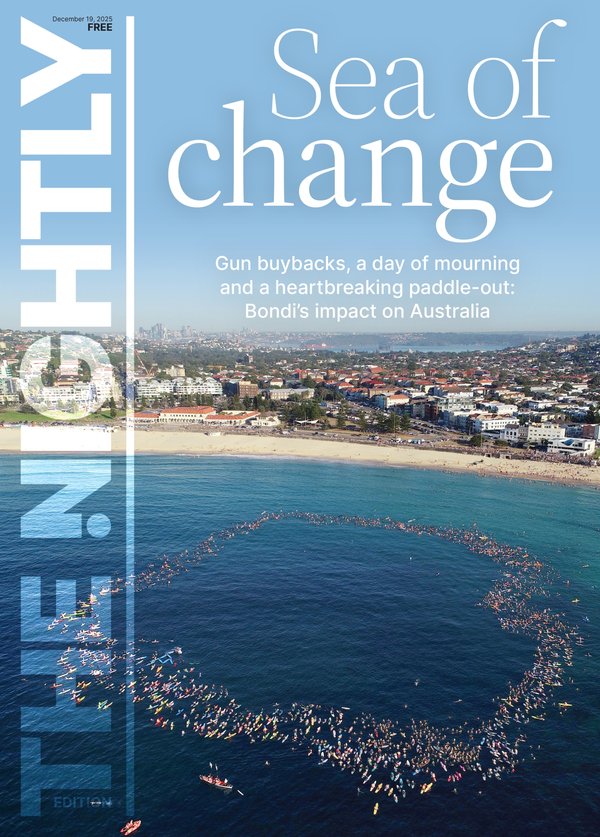THE WASHINGTON POST: New Cannes dress code claims Halle Berry as its first victim

Just one day before its Tuesday opening ceremony, the Cannes Film Festival changed the rules of its always-controversial dress code, in a move certain to send celebrity stylists into anaphylactic shock.
Nudity is barred from the red carpet “for reasons of decency.” Fair enough. This seems intended to stop any stunts like Bianca Censori’s naked outfit with Ye, formerly known as Kanye West, at the Grammys this year.
Far more worrying - at least to drama-loving celebs - is the new ban on “voluminous outfits.” The rules specifically call out “those with a large train, that hinder the proper flow of traffic of guests and complicate seating in the theatre.”
Sign up to The Nightly's newsletters.
Get the first look at the digital newspaper, curated daily stories and breaking headlines delivered to your inbox.
By continuing you agree to our Terms and Privacy Policy.What does this mean? How big is voluminous? How long must a train be to hold up traffic? How many feathers and sequins must it shed? No one knows!
But what we do know is that the new rules have already claimed their first casualty: Halle Berry, a member of this year’s competition jury.
“I had an amazing dress by (Indian designer Gaurav) Gupta to wear tonight, and I cannot wear it because the train is too big,” Berry said at the festival’s opening news conference. “So I, of course, am going to follow the rules. So I had to make a pivot.”
Perhaps it is we, the viewing public, who should feel the most aggrieved - for being denied what could have been a major fashion moment.
Berry did agree with one of the new prohibitions, though: “The nudity part, I do think is probably also a good rule.”
The new rules were included in an FAQ on the festival’s website and made international headlines once observers noticed them. The language states that “the Festival welcoming teams will be obligated to prohibit Red Carpet access to anyone not respecting these rules.”
But the vagueness on what, exactly, is considered nudity, or just how big a dress is too big, could lead to clashes like last year’s viral incidents with a female security guard who rushed Kelly Rowland, Dominican actress Massiel Taveras and South Korean pop star Yoona up the steps despite photographers clamouring to snap pictures of them. The festival does run on a tight schedule, but many observers pointed out that the women being targeted were all women of colour. Rowland, who was captured on video scolding the security guard, said she noticed that women who did not look like her were allowed to take their sweet time walking the carpet. “The woman knows what happened; I know what happened. … I have a boundary, and I stand by those boundaries, and that is it,” Rowland explained the next day. Could vague definitions lead to even more unequal targeting?

Cannes has long insisted upon black tie at its evening galas, which is when the famed red carpets take place. For years, it was understood that men had to wear tuxedos with bow ties, no exception, and women would wear gowns with high heels.
At my first Cannes, I met a well-known female film critic who had broken her foot and was denied entry to a movie she had to write about because she’d worn a flat shoe on her good foot. Then, in 2015, a backlash to the heels began, when a group of women in their 50s were denied entry to the premiere of Todd Haynes’s Carol for showing up in rhinestone flats. Some had medical conditions that made wearing heels impossible.
Emily Blunt came to their defence during a news conference before the premiere of Sicario, saying that everyone should wear flats, while director Denis Villeneuve joked that he and stars Josh Brolin and Benicio Del Toro would wear heels in solidarity.
In 2017, with the heels rules still being enforced, Kristen Stewart spoke out about footwear equality: “If you’re not asking guys to wear heels and a dress then you can’t ask me either,” she said at a news conference. The next year, while entering the premiere of Spike Lee’s BlacKkKlansman, she pointedly took off her black Louboutins in full view of photographers to walk up the red carpet steps barefoot, just as Julia Roberts - comfort pioneer that she is - had done in 2016 at the premiere of George Clooney’s Money Monster.
Jennifer Lawrence made international headlines at the Anatomy of a Fall premiere in 2023 for lifting up the train of her red Dior haute couture gown to reveal flip-flops underneath - but Cannes veterans noted that she was descending the stairs, which means she was leaving the premiere, and therefore hadn’t broken any rules. (And were they even rules? In 2015, as criticism mounted, festival head Thierry Frémaux said there was no official footwear code.)
“On the heels side, I think it’s a very good idea (not to require them),” said Juliette Binoche, this year’s jury president. And, lucky for these jury members, who will be photographed on red carpets for 11 nights straight, the festival’s draconian shoe rules seem to have relaxed. Now, women can wear “elegant shoes” and sandals with or without heels - just no sneakers allowed - with such things as a gown, a pantsuit or “a little black dress.” And for the men, even a nice, regular tie is permitted. Quel scandale!
When pressed for specifics about the ban on nudity and voluminous dresses, the festival remained vague. The rules weren’t even new, the press office insisted in a statement provided to The Post. The festival had just “made explicit in its charter certain rules that have long been in effect.”
Festival organisers weren’t trying to “regulate attire, per se,” the statement continued, “but to prohibit full nudity on the red carpet, in accordance with the institutional framework of the event and French law.”
Where does this leave “naked” dresses, like the filmy, nipple-revealing chiffons worn on the Cannes red carpet by Bella Hadid and Kendall Jenner in recent years, or the peach-coloured lace that Vicky Krieps wore in 2024? Would Florence Pugh get turned away for the viral sheer magenta dress she wore to the Valentino couture show in Rome in 2022? Or was the rule meant to bar people like the woman who was kicked off the red carpet in 2022 for stripping off her clothes in a pro-Ukraine protest?

The voluminous dress ban seems likely aimed less at celebrities than at the many influencers and French models who snag tickets to the galas, then steal camera attention for wearing outrageous outfits that require multiple attendants to help them up the stairs. The reference to seating complications probably refers to the amount of effort it then takes to fit all that tulle down a narrow theatre row once the dress makes its way inside.
Voluminous dresses can also hide secrets, among other things. In 2014, America Ferrera was the victim of a tuxedoed prankster who tried to sneak under her flared gown at the premiere of How to Train Your Dragon 2.
“I feel something behind me, and there’s this guy under my dress, and then two guys drag him away!” she told me at the time. “It felt like a crazy, weird dream.”
Not everyone can be Diana Ross at the Met Gala, the rules seem to proclaim.
At the very least, the new rules will probably help stem the tide of what Frémaux seems to think is the greatest scourge of the festival: red carpet selfies. He banned those in 2018, calling them “ridiculous and grotesque.”
© 2025 , The Washington Post
